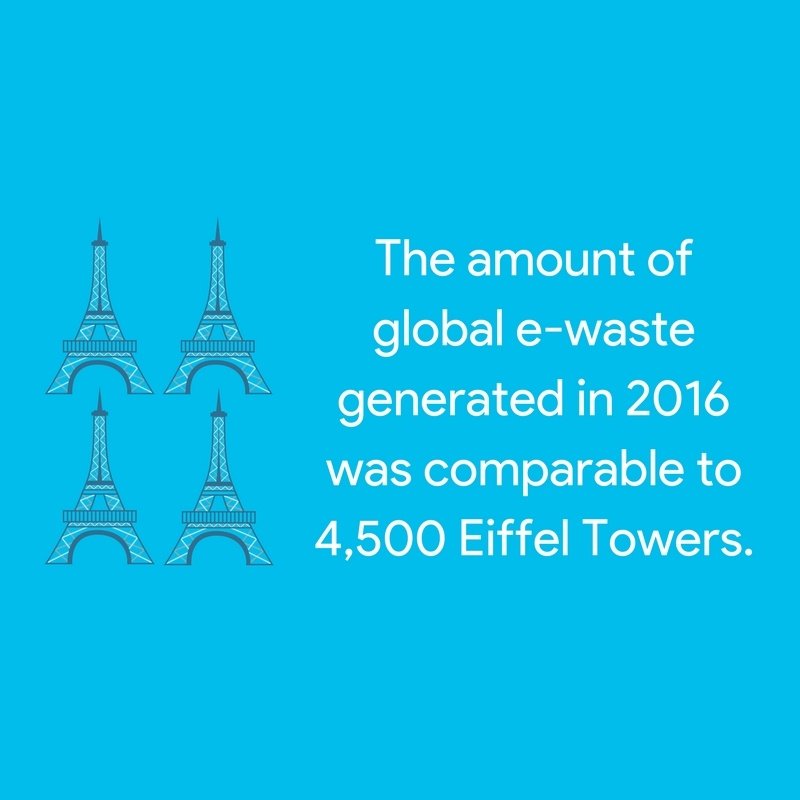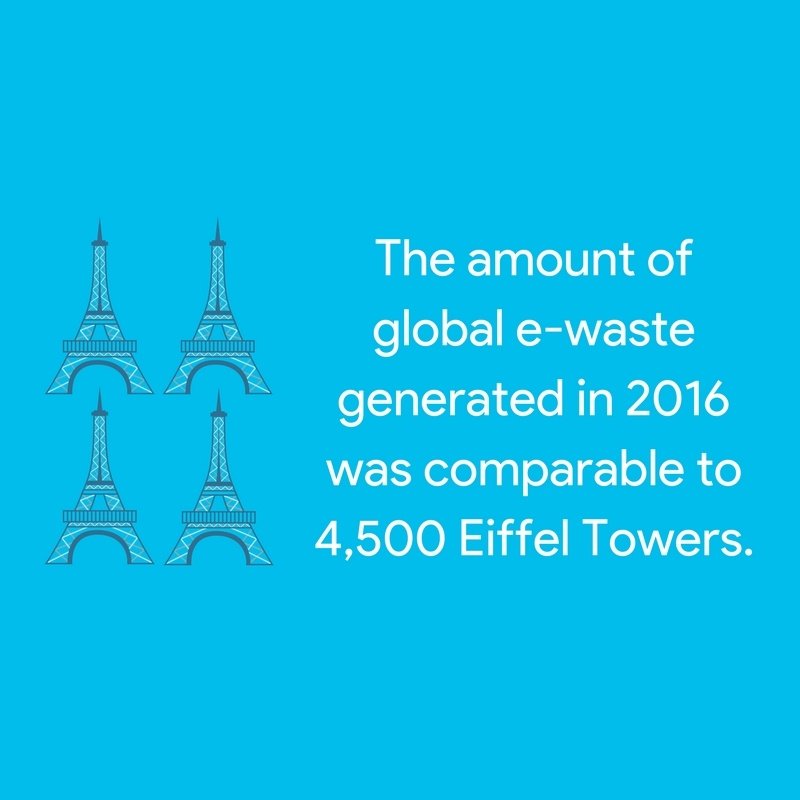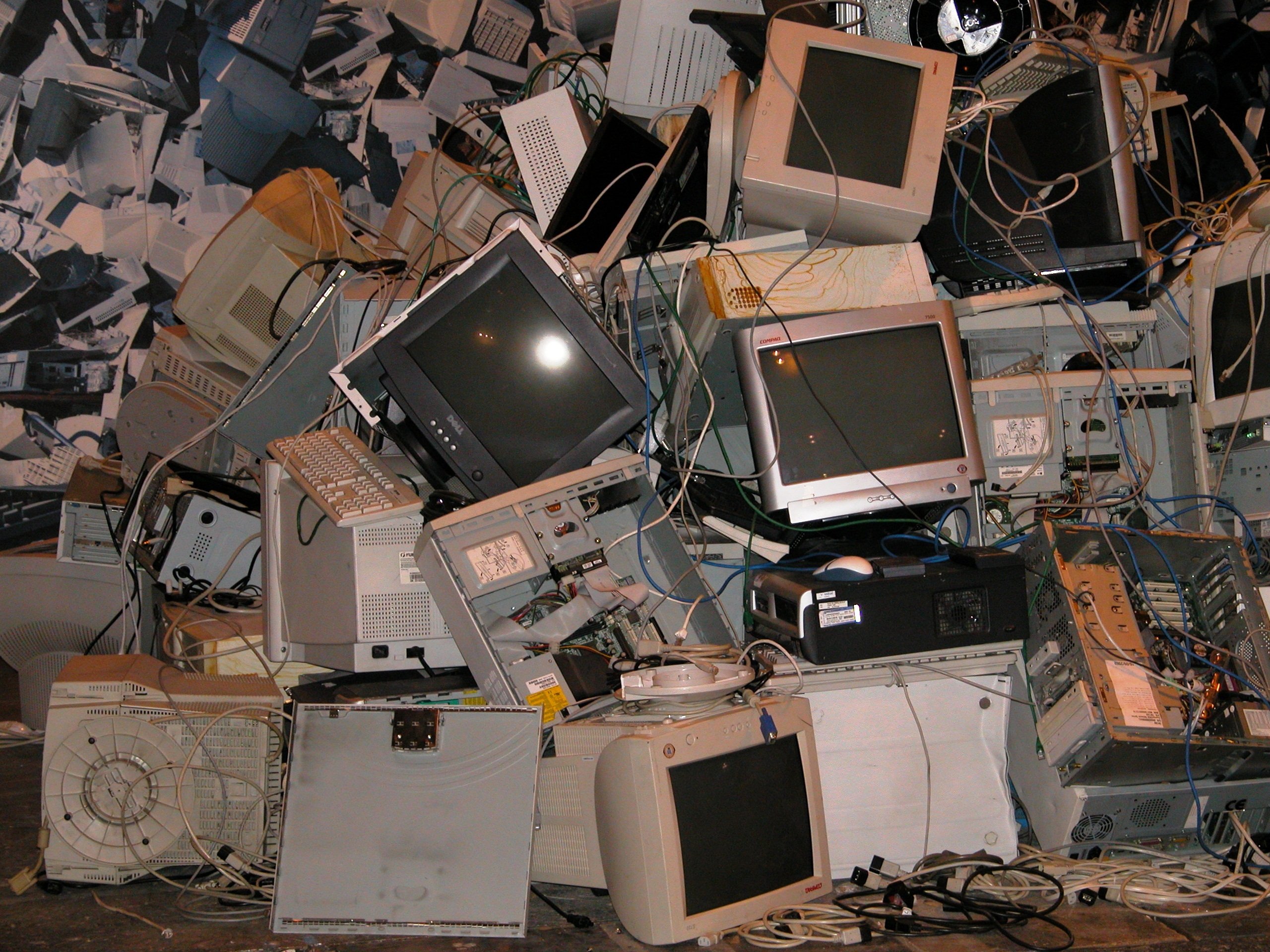What To Know About E-Waste and Electronic Recycling

How many old cell phones, computers and VCRs do you have collecting dust at home? With our rapidly changing lifestyles and quickly evolving technology, we feel pressured to purchase the newest technology while discarding our electronics before they become obsolete.
On a global scale, electronic waste clocked in at 45 million tonnes in 2016. Based on a joint study, e-waste for the same year worldwide is comparable to 4,500 Eiffel Towers.

What is e-waste?
Electronic waste, also called e-waste, are electrical or electronic materials that have reached the useful end of their lifecycle or have been discarded by their owners. E-waste includes any equipment that has an electrical source such as a power socket or battery.
The electronic waste that we produce can be grouped into three main categories:
- small equipment like vacuum cleaners and toasters,
- large equipment such as washing machines, and
- communication technology like cellphones.
What causes electronic waste?
Consumers may not realize that their lifestyle and purchase choices are driving up e-waste. We may feel pressured to purchase the latest technology because companies have released new features, while their existing model is still in working condition.
Another reason is our throwaway culture where we tend to purchase new technology because it’s cheaper than repairing what we already have. December tends to generate the highest amount of electronic waste since new electronics are on sale as holiday gifts.

How are some countries dealing with e-waste?
In Canada, e-waste is dealt with at the provincial level in one of two ways: ERP or PSP. ERP is the extended producer responsibility, where the manufacturer pays for the electronics to be disposed of properly once they reach their end-of-life. PSP is the product stewardship program, environmental fees or funds paid by the public at the point of purchase. Both ERP and PSP are e-waste methods that place the onus of e-waste disposal on private organizations.
Electronics Products Recycling Association (EPRA), a Canadian non-profit, operates an electronics recycling program that providing consumers with another way to properly dispose of their unwanted electronics. To date, the ERPA estimates that it has diverted 100,000 metric tonnes of e-waste from landfills.
In the U.S., the National Center for Electronics Recycling (NCER), a non-profit organization, provides consumers with additional information on the electronics recycling process, including the two most common e-recycling methods.
Demanufacturing is one method where electronics are taken apart manually to find the recyclable raw materials and then repurposed in secondary markets. Shredding is another method, but less labour intensive since most of the components are loaded into shredding equipment.
Some organizations have created awareness campaigns to help consumers understand their options with e-recycling. However, more can still be done. For example, almost 85% of households have one or more cellphones and replace them every 18 months or so. Statistics Canada found that 45% of households have unwanted cell phones that are lying around collecting dust, perhaps due to data privacy concerns. 25% have dropped off cellphones at depots, 20% have returned them to retailers, and 10% have donated or given the item away.
Share your e-waste story with us
Does your community run promotional campaigns to help increase awareness around electronic waste? Does your municipality have an e-waste disposal program? How effective is it? We’d love to hear from you.